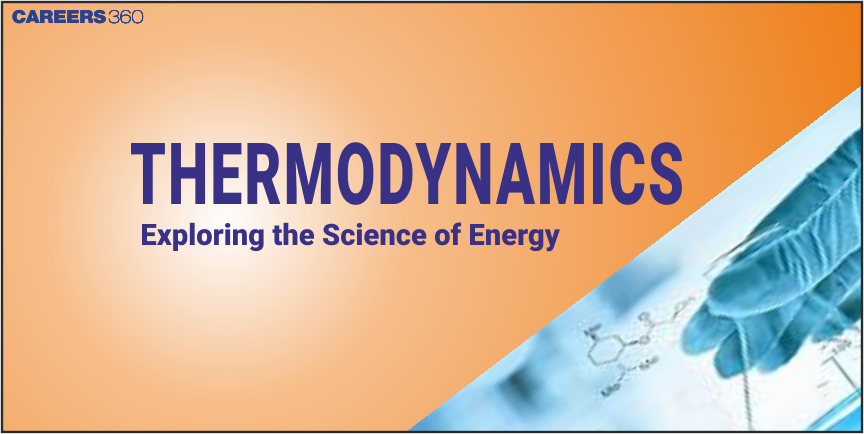Introduction To Thermodynamics
Thermodynamics is the branch of science which deals with the quantitative relationships between different forms of energy or it deals with the energy changes accompanying physical and chemical transformations.
This Story also Contains
- Main objectives of Thermodynamics
- Terms Related to Thermodynamics
- Summary

Main objectives of Thermodynamics
Its main objectives are as follows:
To decide the feasibility of a given transformation.
To derive various energy changes and their interrelations.
To derive laws like—phase rule, Law of mass action, etc.
Presentation of experimental data in a correct manner.
Terms Related to Thermodynamics
System
It is the region or space to be investigated or the origin at which study of pressure, temperature etc., are to be made and which is isolated from the rest of the universe with a bounding surface.
Surroundings
It is a region apart from the system which might be in a position to exchange energy and mass with the system.
It is to be noted that the system and surrounding together constitute the universe.
Homogeneous and Heterogeneous Systems
Homogeneous Systems
It is all over uniform that is made of one phase only. For example, pure liquid or pure solid, or pure gas present alone.
Heterogeneous Systems
It is non-uniform as it consists of two or more phases. For Example, ice, and water, solid in contact with a liquid.
Type of Systems
Systems are divided into three parts-
(i) Open System: In such a system, both matter and energy can be exchanged with the surrounding.
Example, Boiling of water in a beaker, Limekiln or ice in an open beaker, Zinc granules reacting with dilute HCI to give hydrogen gas is also an example of open system as hydrogen gas escapes and the heat of reaction is transferred to the surroundings.
(il) Closed System: In such a system, exchange of energy takes place only with the surroundings.
Example, Heating of liquid in a sealed tube or ice in a closed beaker
(iii) Isolated System: In such a system, there is no exchange of matter or energy with the surroundings. For example, Liquid in a sealed thermos flask or ice m thermos flask
Recommended topic video on (Introduction To Thermodynamics)
Some Solved Examples
Example 1: An isolated system is a system in which
1)There is no exchange of energy with the surroundings.
2)There is exchange of mass and energy with the surroundings
3) There is no exchange of energy and mass with the surroundings.
4)There is exchange of mass with the surroundings.
Solution
In an isolated system, there is no exchange of energy or matter between the system and the surroundings. The presence of reactants in a thermos flask or any other closed-insulated vessel is an example of an isolated system. So, we can say that in an isolated system, neither heat nor matter can be exchanged.
Example 2: Thermodynamics is concerned with
1)Total energy of a system
2) Energy changes in a system
3)Rate of a chemical change
4)Mass changes in nuclear reactions
Solution
Thermodynamics is a branch of science that deals with the quantitative relationship between heat and other forms of energy. Thermodynamics is not concerned with the total energy of the body but only with energy changes taking place during the transformation.
Hence, the answer is the option (2).
Example 3: Thermodynamical universe means
1)Thermodynamic system
2)Thermodynamical surrounding
3) Both thermodynamical system + surrounding
4)None of the above
Solution
Thermodynamical Universe
= Thermodynamical System + Thermodynamical Surrounding
Hence, the answer is the option (3).
Example 4: Open system can exchange
1)Only matter
2)Only energy
3) Both matter and energy
4)None of the above
Solution
An open system can exchange both matter and energy.
Hence, the answer is the option (3).
Example 5: Warming ammonium chloride with sodium hydroxide in an open test tube is an example of :
1)Closed system
2)Isolated system
3) Open system
4)None of these
Solution
When we are warming ammonium chloride with sodium hydroxide in a test tube, there is an exchange of heat as well as the mass between the system and surrounding due to an open test tube or test tube without a cap. Mass is transferred from the open end of the test tube due to evaporation. Also, heat is being exchanged through the walls of the test tube.
Hence, the answer is the option (3).
Summary
Thermodynamics is that part of Physics which deals with the relationships among heat, work, temperature, and energy. It is a macroscopic view on how energy transfers and changes its type in different types of devices, such as engines, refrigerators, and living beings. Core to thermodynamics are the four laws that make out the Zeroth Law of thermodynamics, which is a definition for temperature and thermal equilibrium; the First Law, narrating the principle of the conservation of energy; the Second Law, explaining the concept of entropy and the direction of spontaneous processes; and the Third Law, stating the inability to reach absolute zero.